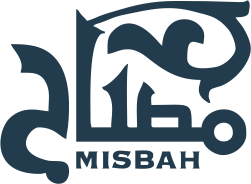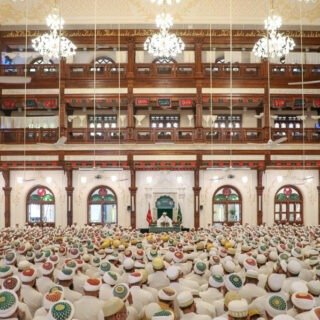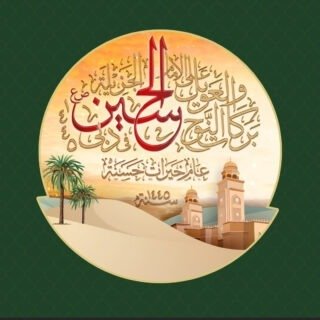فصل في الصورة والهيولى والاداة
The Chapter on Form, Primordial Matter and Tools
Imam Ahmed al-Mastur AS writes:
My brother, know that a single entity can be known by multiple names. Sometimes it is known as ‘primordial matter’, while sometimes it is an ‘object’. At times it is a ‘form’, and in other instances it is known as something that has been ‘formed’. In some cases it is an ‘instrument’ and in other it is a ‘tool’.
It is known as ‘primordial matter’ because of the potential it has to accept the form given to it: shapes, designs and colours etc. It can be called an ‘object’ by virtue of a craftsman who plies his craft in it and gives it shape and design. When an entity accepts this it is known as [something that has been] ‘formed’. When a craftsman uses it for his craft or for another purpose it is then known as a ‘tool’. An example of this is a piece of iron. It is ‘primordial matter’ for all the forms that it may accept, an ‘object’ for the ironsmith to ply this craft. When the ironsmith makes a knife or an axe or a saw or a rasp or some other article, it is then called something which has been ‘formed’. When a butcher or someone else uses the knife it then becomes a ‘tool’. It is the same when it comes to an axe and other articles.
Know my brother, that the types of raw material for all human crafts are two: simple and composite. Simple consists of four forms: fire, air, water and earth, while composite consists of three compounds: minerals, plants and animals. These three are all formed by the natural world. The natural world is the raw material for the spiritual world, which in turn is the raw material for the divine one.
Know my brother, that every human craft requires a tool or tools, an instrument or instruments. In this instance, the difference between a tool and an instrument is that instruments are the hands, the fingers, the feet, the head, the eyes; in essence all parts of the human body. Tools are all devices that are external to the craftsman like the axe of a carpenter, the hammer of an ironsmith, the needle of a weaver, the pen of a writer, the knife of a cobbler, the razor of a hairdresser and other similar tools that craftsmen employ in their trades, and by which they are able to ply their crafts.
Know that the craft of each craftsman requires tools of various shapes and forms by virtue of which their trades differ. Through these tools a craftsman demonstrates multiple motions and a range of skills. For example a carpenter uses his axe to chop [a block of wood] with a vertical circular motion, while with a saw he cuts using a reciprocating motion and he make holes with a drill through an oscillating motion, while the motion of the drill is rotary.
Taking this observation further, one can find that there are seven motions for each craftsman when it comes to his craft, one is rotary while the remaining are linear. This is in accordance with divine providence. We have mentioned in the ‘Epistle on the Sky and the Universe’ that the motions of planetary bodies are of seven types, one of them rotary, as originally intended, while the remaining six are incidental. The motions of persons beneath the orbit of the moon are in harmony with them, for the planetary bodies are the cause and these persons are its effect. A feature of an effect is that the influences of its cause are found in them. Due to this the Wise have said that secondary matters emulate primary ones, in the same way that children emulate the crafts of their fathers, mothers and teachers when playing.
Know my brother, there is no choice but for a human craftsman to put into motion one or many parts of his body when plying his craft, like his hand, leg, back, shoulder and knee. In essence, there is no part of the human body but through it the soul manifests an action or actions, which differs from the action that it manifests from another body part. This is because the parts of the body are tools for the soul. We have discussed this concept in the following epistles: ‘The Senses and the Sensed’, ‘The Intellect and the Perceivable’ and ‘Man is a Microcosm of the Universe’.








